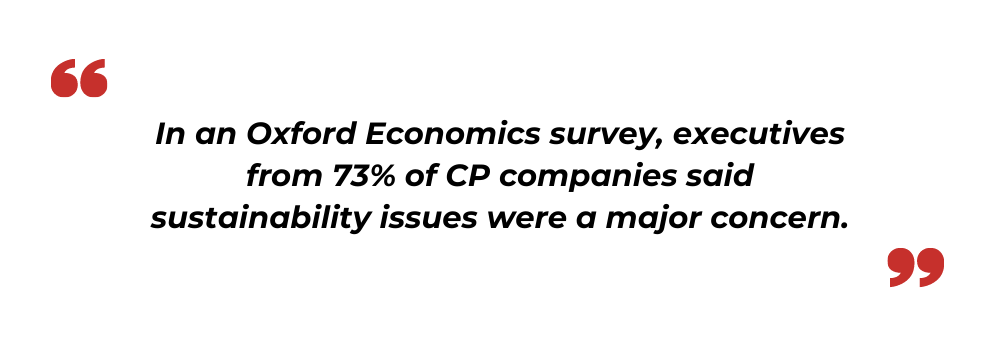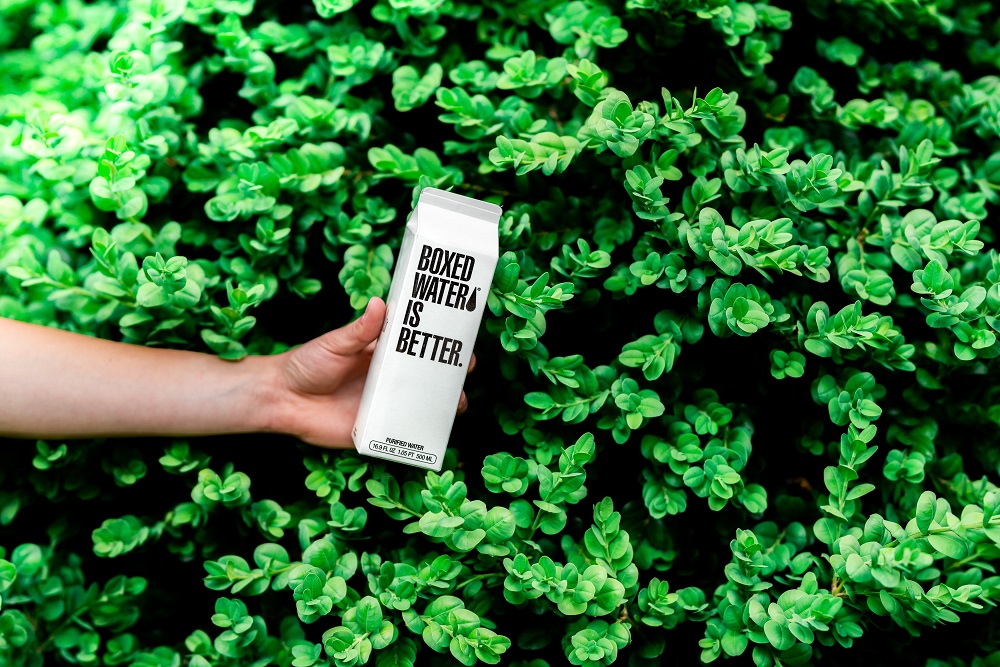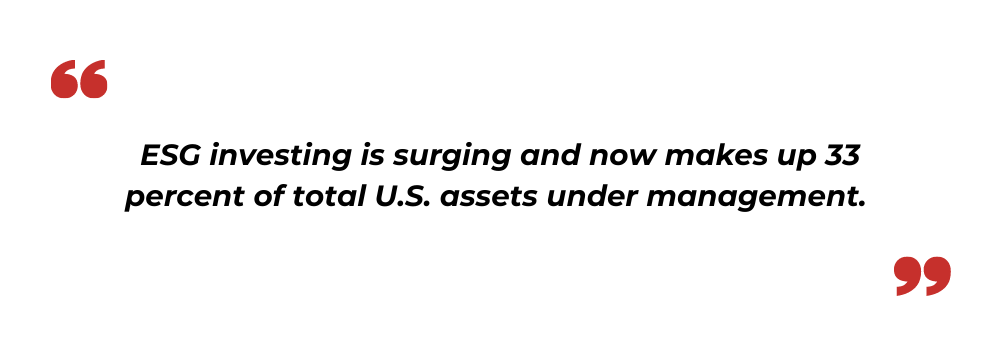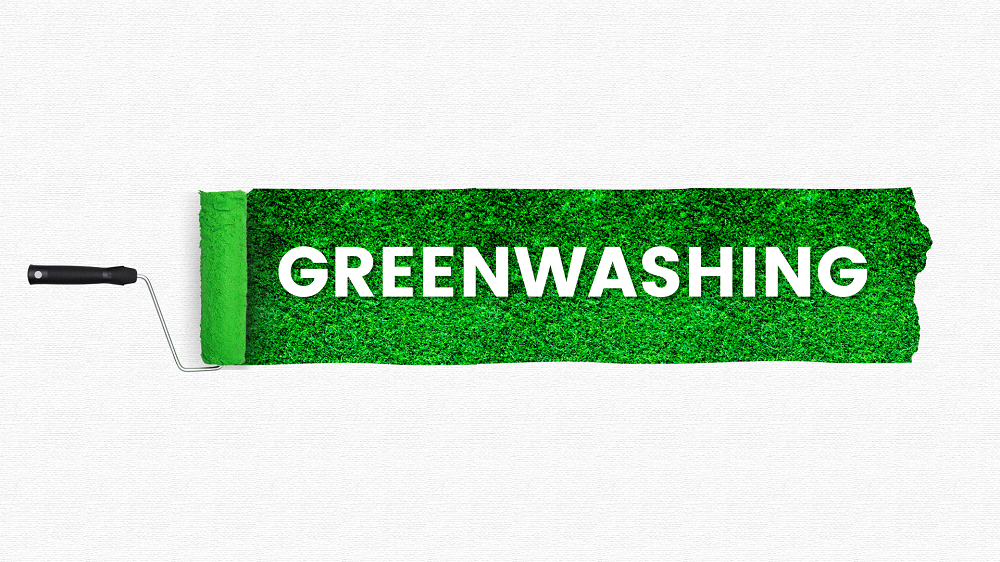The world is becoming more eco-friendly. We live in the era of conscientious consumers where stakeholders are supervising ESG policies in businesses more than ever before. There is a percentage rise in consumers willing to pay a premium for safer, healthier, and environmentally conscious brands and products.
The Sustainability paradigm is navigating the ESG consulting landscape for businesses to balance the interests of their shareholders, employees, and customers. Companies are waking up and realizing that employing eco-friendly practices is a “must-have,” not a “nice to have.”
It is critical for companies to take meaningful and industry-appropriate steps to avoid greenwashing and achieve their ESG goals. Being labeled as a firm that engages in “greenwashing” can deeply fracture the firm’s relationship with stakeholders and irreparably damage the trust of consumers.
If you have ever picked up a product because the packaging said “natural” on it or that it looked recycled, then you may have been a victim of greenwashing.
What is Greenwashing?
Greenwashing is the approach of making brands appear more sustainable than they actually are. This involves adopting cynical marketing ploys, performing misguided PR stunts, or merely changing the packaging of an existing product and labeling it as "green or natural" while continuing to use unsustainable practices.
It is a practice companies employ to appear as if they care for the environment while increasing their profit margins, as they are aware that eco-conscious people are willing to shell out more money for sustainable products. Most of us are trying to adopt a greener way of living and seeking out brands and companies that follow environmentally friendly practices.
Read more: Top ESG investing trends to watch out for in 2022
What is Considered Greenwashing in Businesses?
A business or company is said to indulge in greenwashing when they spend large amounts of time and money marketing and promoting their “green” goods or services rather than using the same time and money to actually implement environment-friendly means and practices.
Greenwashing - the practice of branding something as sustainable, green, or eco-friendly, green- deceives consumers into thinking they are supporting the planet by choosing the right products.
One uncertainty still prevails-
Are businesses being held accountable for the way they advertise?
But how to check if companies are really as green as they pretend to be? & What should customers look out for to spot greenwashing?
Let’s explore the top ten signs of greenwashing and understand what greenwashed ads and claims businesses are making to fool their customers.

Read more: Climate Action Warriors – Top 15 Women Leaders Fighting Climate Change
1. Fluffy language
Expressions such as "eco," "sustainable," "environmentally friendly," and "green" are commonly used by companies to make their businesses appear environmentally conscious. But in reality, they rarely adhere to scientific, eco-friendly standards. With phrases like 'eco,’ ‘green,’ ‘low-CO2' becoming marketing magic words for businesses, these are on the verge of meaningless among the admen.
2. Green products from a dirty company
Sustainability cannot be applied to just one product among many. Companies are now launching "sustainable” ranges and collections - a common marketing tool of high-volume. These fast fashion labels are packaging their range of clothing as “eco” to promote their acceptance of an eco-friendly business model. But this does not indicate that the brands have made a complete overhaul. What they are actually doing is hopping on the green glow initiative.
3. Suggestive imagery
Plastering pictures of the earth, polar bears, wheat fields, or rain forests can be considered a savvy marketing ploy. While they can help to distract from, or misinform a company’s true environmental impact, they do not scream environment-friendly brands. Businesses should only use symbols or labels that reflect their claim and do not portray a false impression on the consumers.

4. Irrelevant claims
While brands are to set targets for their environmental impact, promising unachievable claims can put them in jeopardy. Large brands that have set their greenhouse gas emissions targets do not state whether they are on track to meet them, thus making them a part of the vicious greenwashing wagon.
5. Best in class
Brands marketing their products as the best of a class or best in sustainable domain does not necessarily imply that they offer the best, eco-friendly products to their customers.
6. Lack of credibility
Certain industries, no matter what, can never turn green ways of working. When such industries such as Oil companies and Airlines promise to go eco-friendly, the message is nothing but sort of a gimmick that may lead to a loss in their credibility in the market.
7. Jargon
Brands that dazzle their consumer with science and technical detail but portray zero means of being eco-friendly. Businesses that include jargon such as "sustainable," "eco," and "green" in their marketing plans are often the ones that rarely adhere to these scientific standards.
8. Imaginary friends
Promoting endorsements or marketing a conservation logo on your promotional content or ad is nothing but a sort of greenwashing.
9. Proof
Brands that cannot substantiate their claims or present evidence of practicing environment-friendly approaches in their work can also be labeled as greenwashing brands.
10. Outright lies
Telling outright will definitely land you in trouble. The most offensive kind of greenwash - is brands engaging in violating the trust of their customers. It is better to part ways with them.

Read more: ESG Reporting Services That Make Your Business Future-Proof
How can Greenwashing Harm a Brand’s Reputation?
Companies use greenwashing to appeal to their customers who care about, and support sustainable practices without having to make changes to their existing business practices. It is typical for greenwashing companies to spend more time and money on marketing the “eco-friendliness” of their products than actually working to ensure they are sustainable. But the biggest risk of damage to brands by greenwashing is reputational.
There are now numerous cases of brands being publicly called out and shamed for co-opting environmental causes simply to bolster their image. Let's explore some of the greenwashing examples where large brands claimed to support the sustainability bandwagon, but their claims backfired, leading to great damage.
Which large corporations have been accused of greenwashing?
Here are some noteworthy examples of greenwashing-
Apple
While this global tech giant portrays a positive public perception of being a green company, many of the company’s “green” policies serve to save money. In 2020, the company announced that iPhone 12 would ship out without earbuds or a wall charger to cut down on e-waste.
While this measure seemed like a step in the right direction, critics saw this as a way to divert attention from the company’s real source of e-waste. Apple's phones are notorious for being expensive to repair, and they stop being supported by developers within a few years of their release.
Amazon
One of the most influential retailers globally, Amazon has set the standard for many global green initiatives. But recently, the company was under fire for making public proclamations about doing better for the environment, but it was quietly supporting legislation that undermined these measures.
In 2019, the company signed a Climate Pledge with a goal of hitting net-zero carbon emissions by 2040. However, this pledge failed to show the steps. What was even worse were the reports that highlighted that the pledge only covered Amazon’s direct operations and not the carbon footprint of its supply chain, which accounts for more than 75% of the company’s emissions.
The company also introduced a “Climate Pledge Friendly” badge on products that are Fair Trade, certified by the Rainforest Alliance, and other environmental certifications. However, some of their products are not eco-friendly, including products like disposable baby wipes, single-use batteries, and food products that contain palm oil.
IKEA
The largest consumer of wood in the world, IKEA, has also experienced its share of greenwashing claims. Reports show that its timber consumption has doubled in the last decade. An investigation carried out by Earthsight led to the discovery that IKEA has been building beechwood chairs using illegally sourced wood from the forests of Ukraine’s Carpathian region. This oversight raises serious questions about IKEA's ethics and transparency. In spite of these allegations, IKEA is still one of the best in the world in terms of its sustainability credentials.
Read more: 15 top-rated ESG stocks to consider in 2022

Why is greenwashing rampant today?
Because it works.
Greenwashing is more pervasive than ever. It involves using marketing and PR tactics to overamplify a brand's ESG efforts and gain greater favor from consumers, investors, employees, etc.
Apart from consumer pressure, the practice of engaging in greenwashing is helping firms in building positive public relations and boosting their brand image. Companies that are sticking to adopting environment-friendly practices are instantly attracting more consumers than a firm that does not care or is actively destroying the environment.
Conclusion:
Society is experiencing a paradigm shift with people becoming more environmentally conscious than ever. The widespread practice of greenwashing is forcing consumers to do their research and ask questions about sustainability and ethical practices. This shift in consumer preference towards more environmentally friendly goods or services is posing a grave threat to businesses that do not incorporate environmentally friendly practices in their business model.
The sudden surge in environmentally-conscious-practices is compelling a considerable number of companies to adopt environmentally friendly practices. With the demand for firms to go “green” on the rise, the same scenario is leading to a sudden rise in the number of businesses that are making claims to green credentials but, in fact, are doing very little to nothing in reality.
With younger generations prioritizing eco-friendly and impactful brands, there is a sudden shift in the ways businesses are adopting ethical policies. Businesses are joining hands with other eco-friendly businesses to encourage their customers to do the same. Businesses practicing going green without the need to greenwash are benefiting due to growing consumer loyalty, support, and a greener footprint on the planet.
With offices in New York, San Francisco, Austin, Seattle, Toronto, London, Zurich, Pune, and Hyderabad, SG Analytics, a pioneer in Research and Analytics, offers tailor-made services to enterprises worldwide. A leader in Sustainability Consulting Services, SG Analytics helps companies focus on supporting their sustainable performance by delivering end-to-end support. Contact us today if you are looking to make critical data-driven decisions that facilitate accelerated growth and breakthrough performance.









